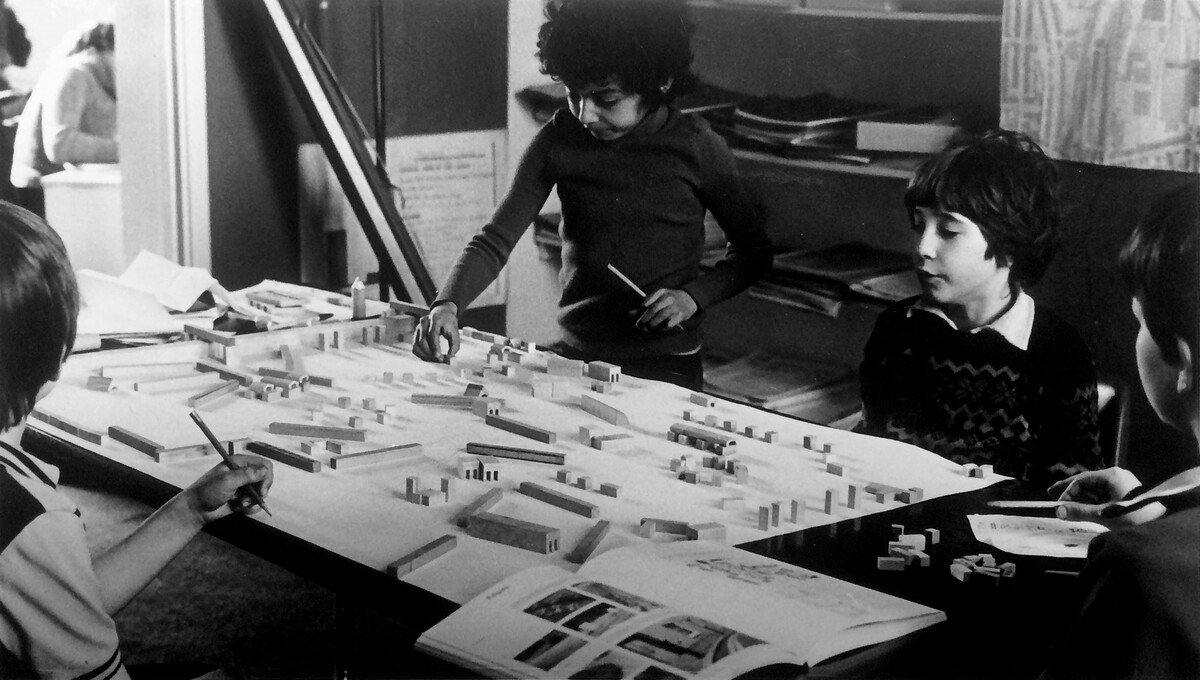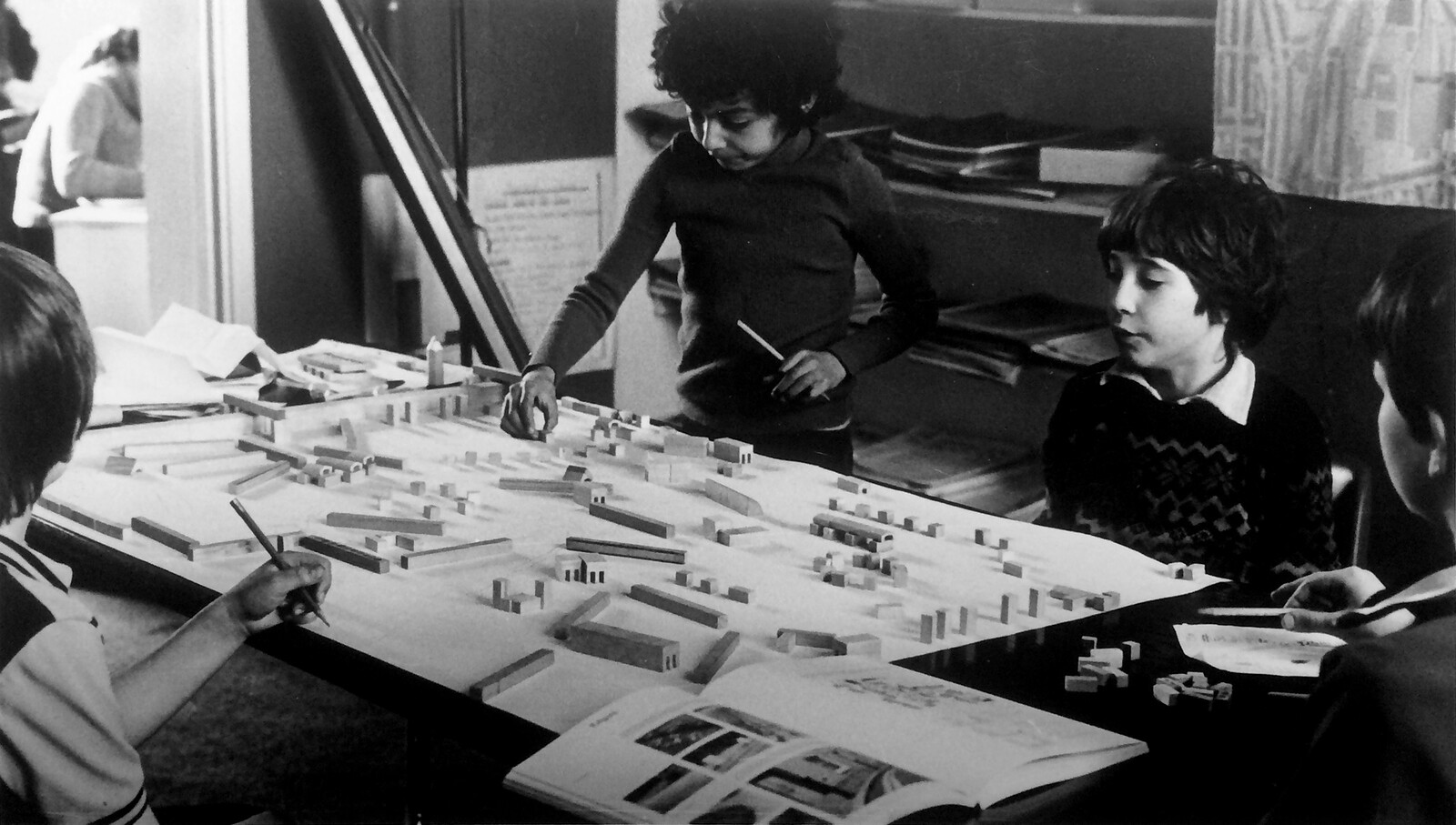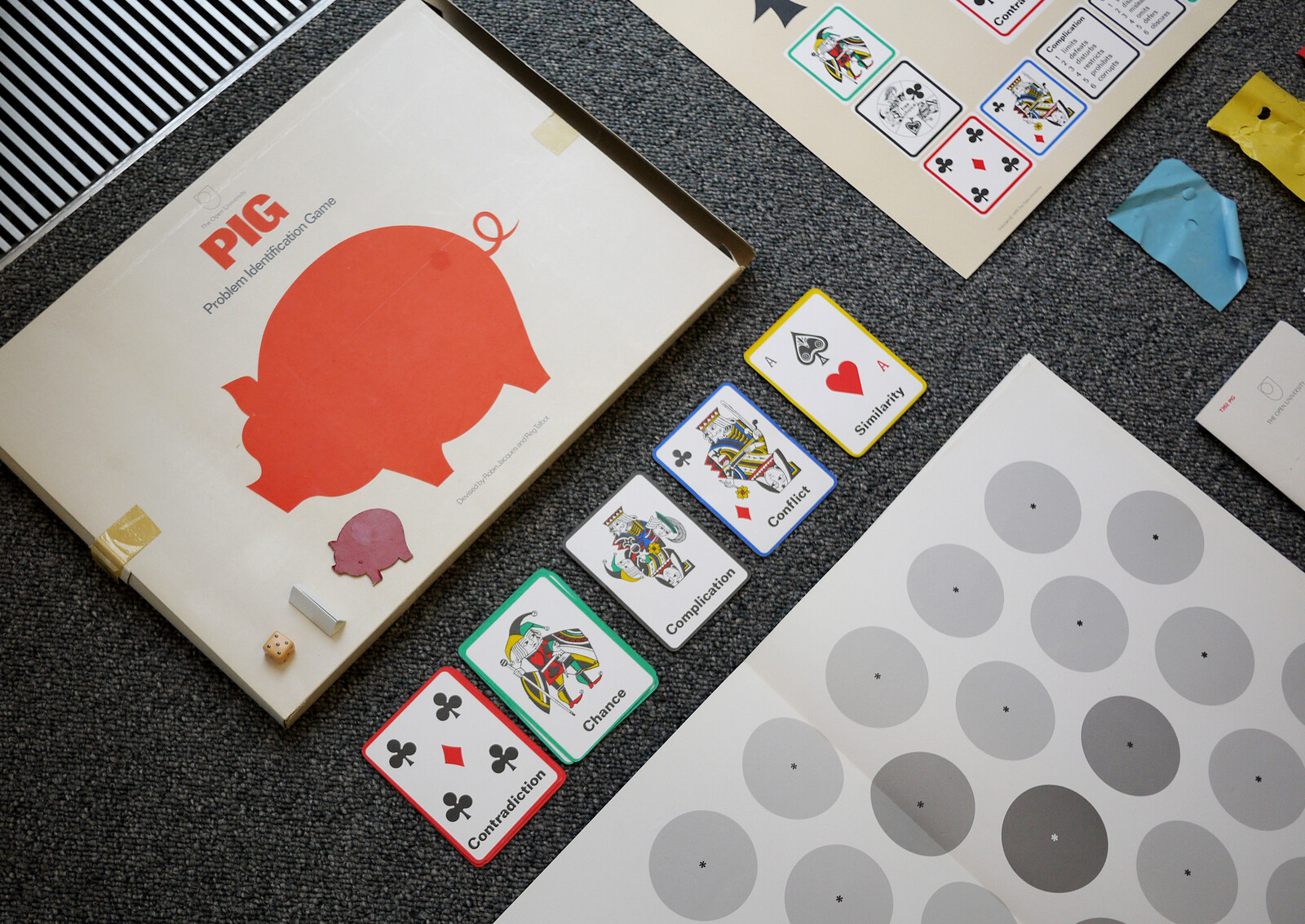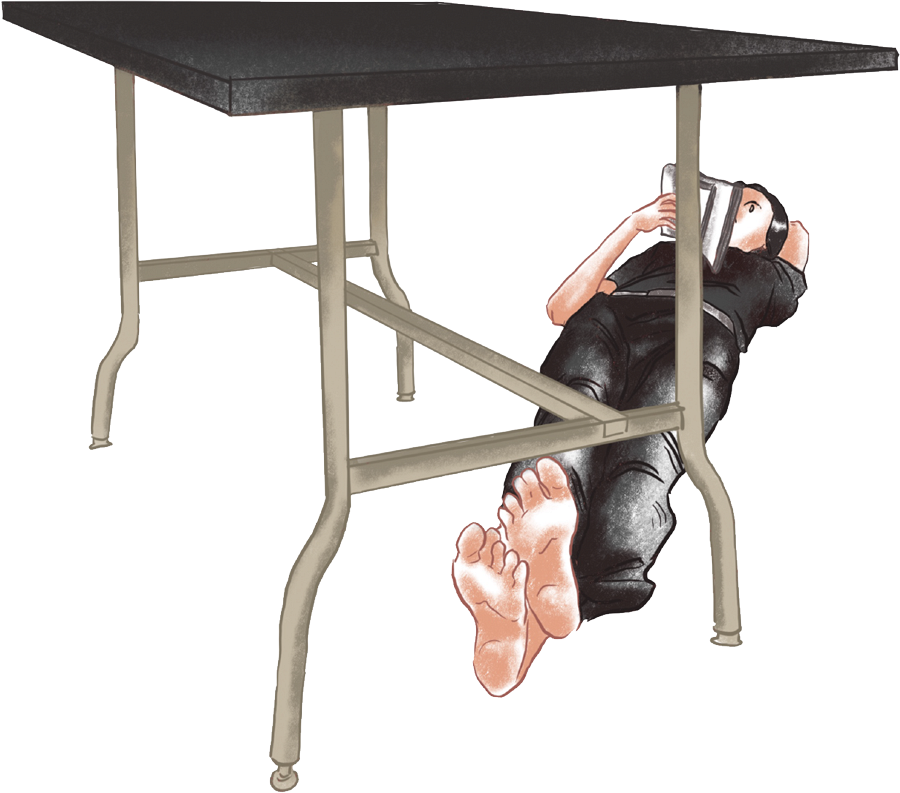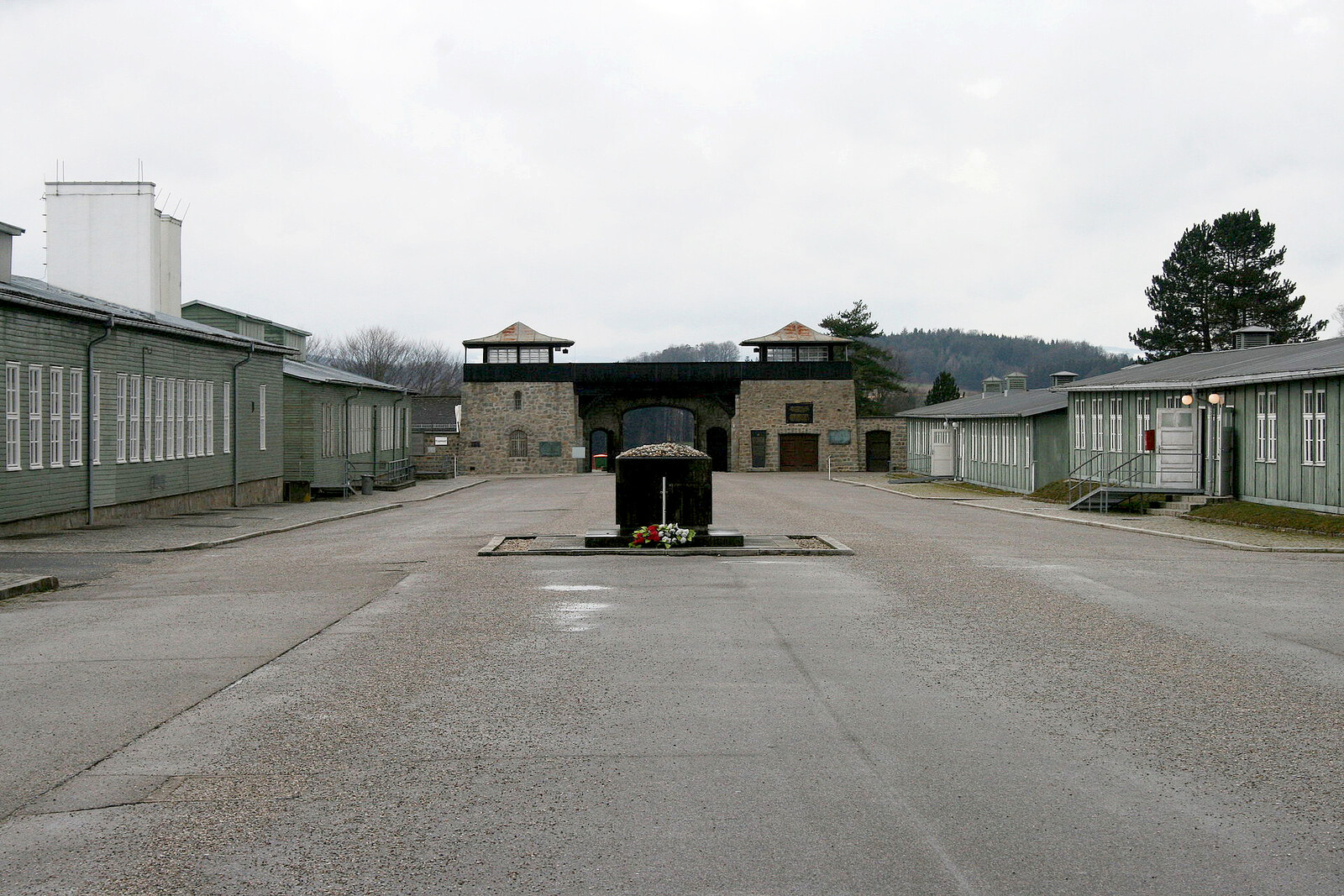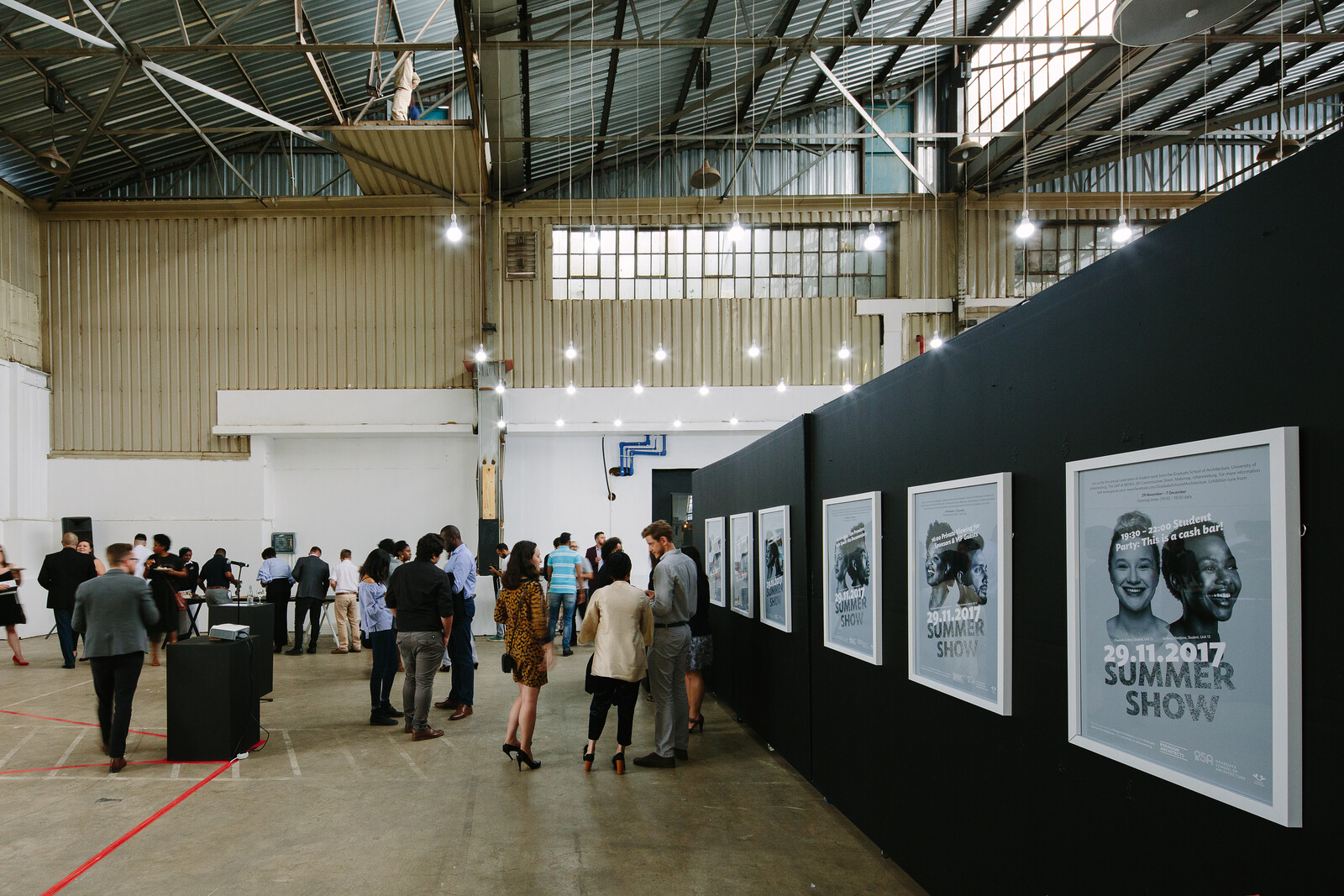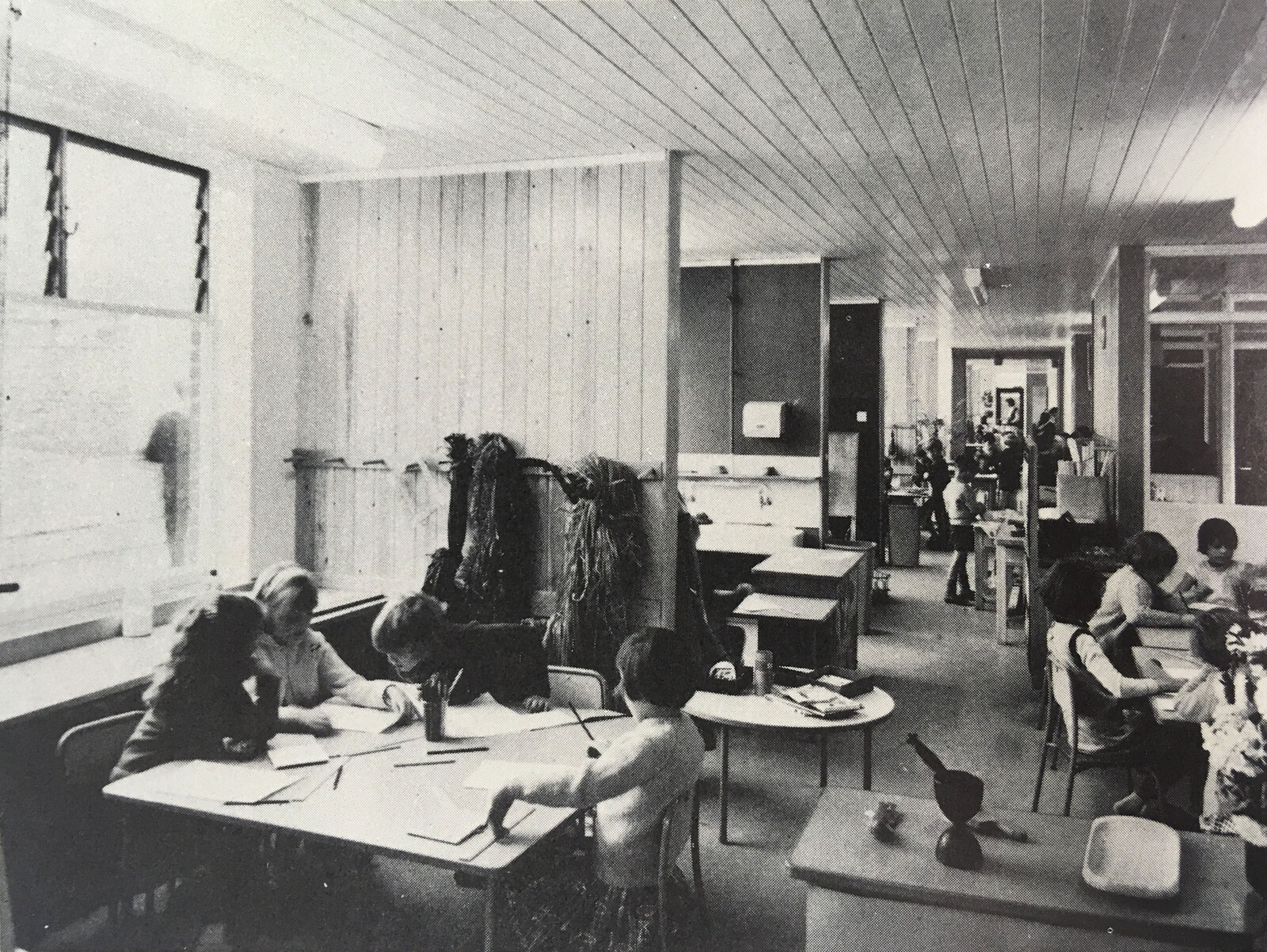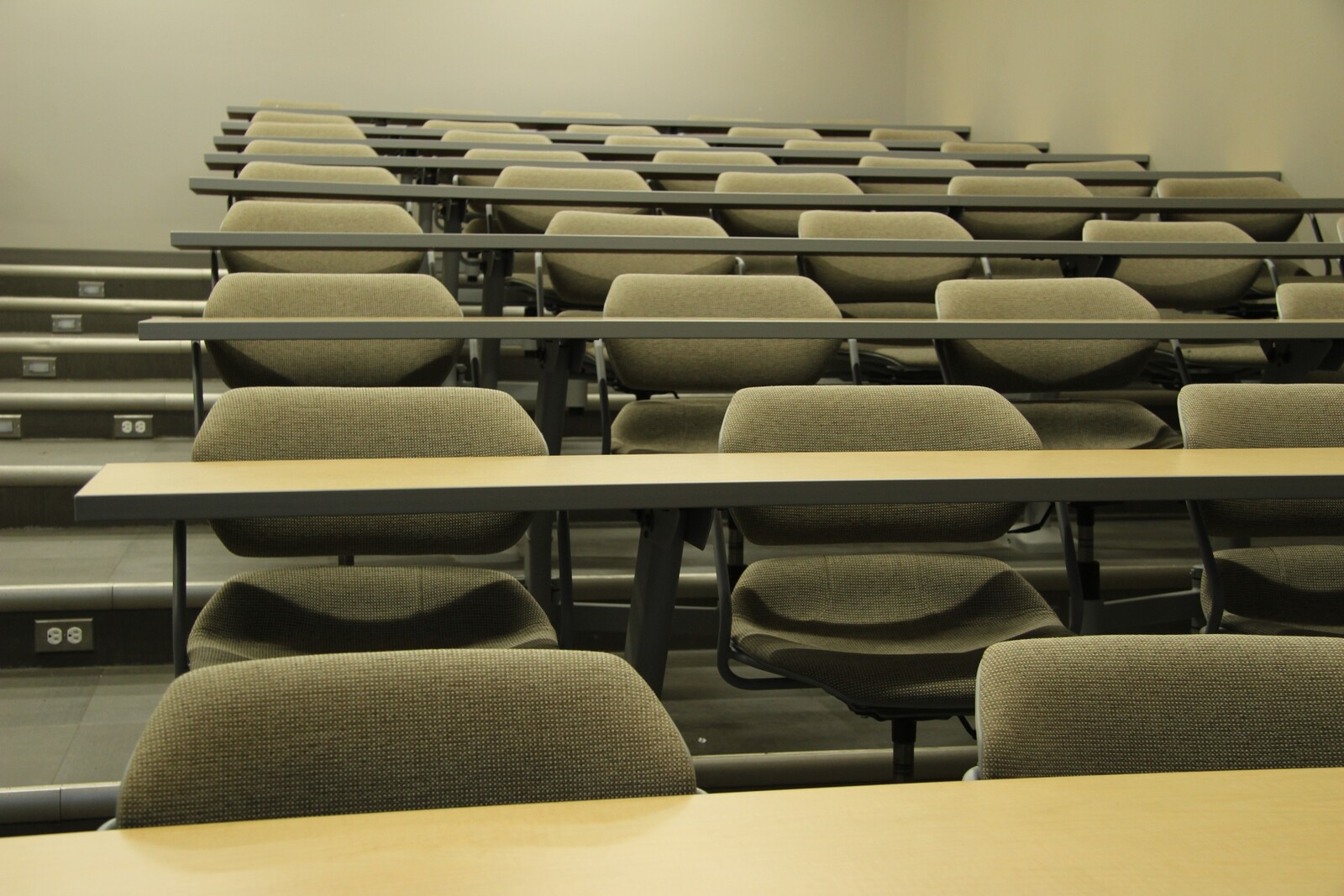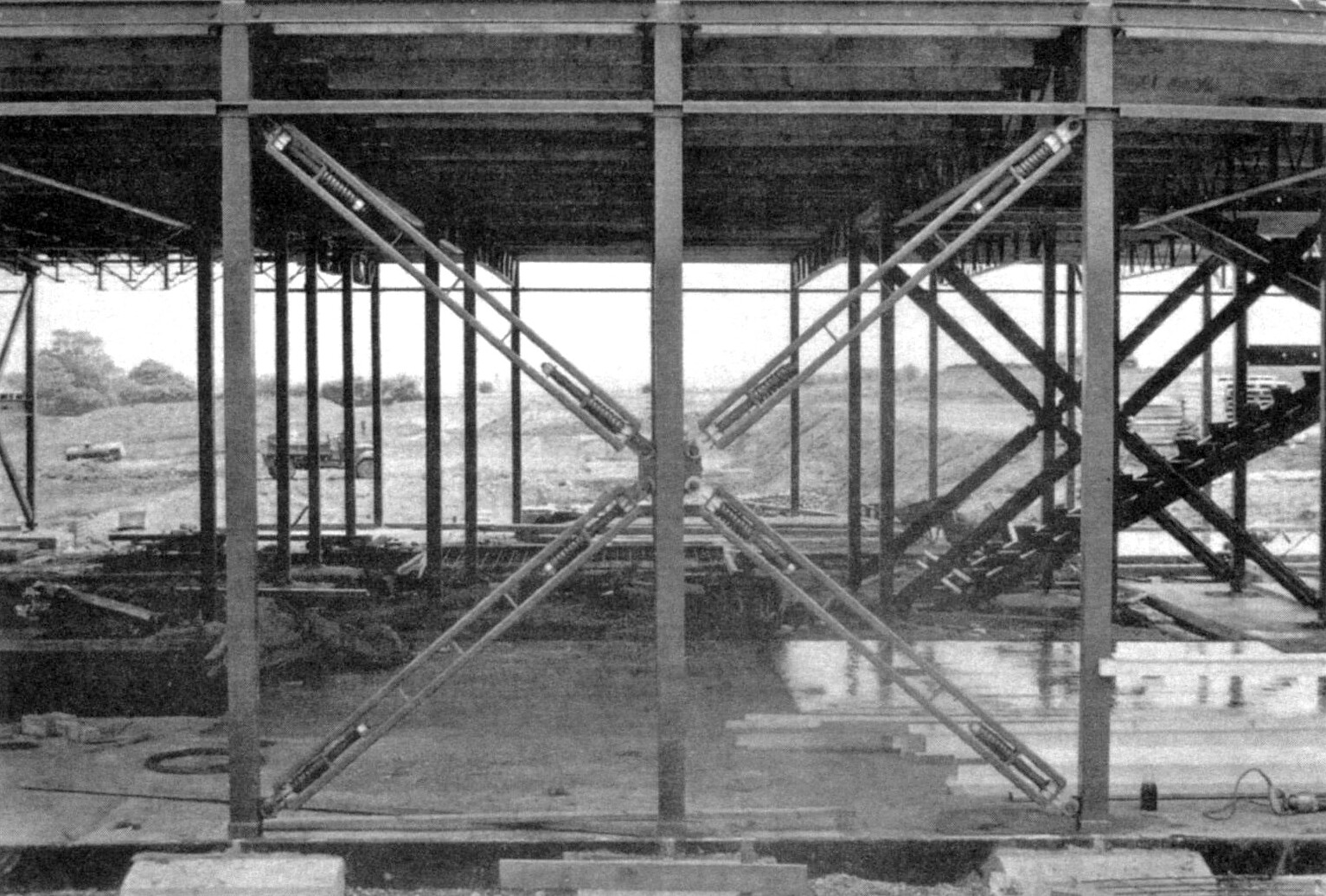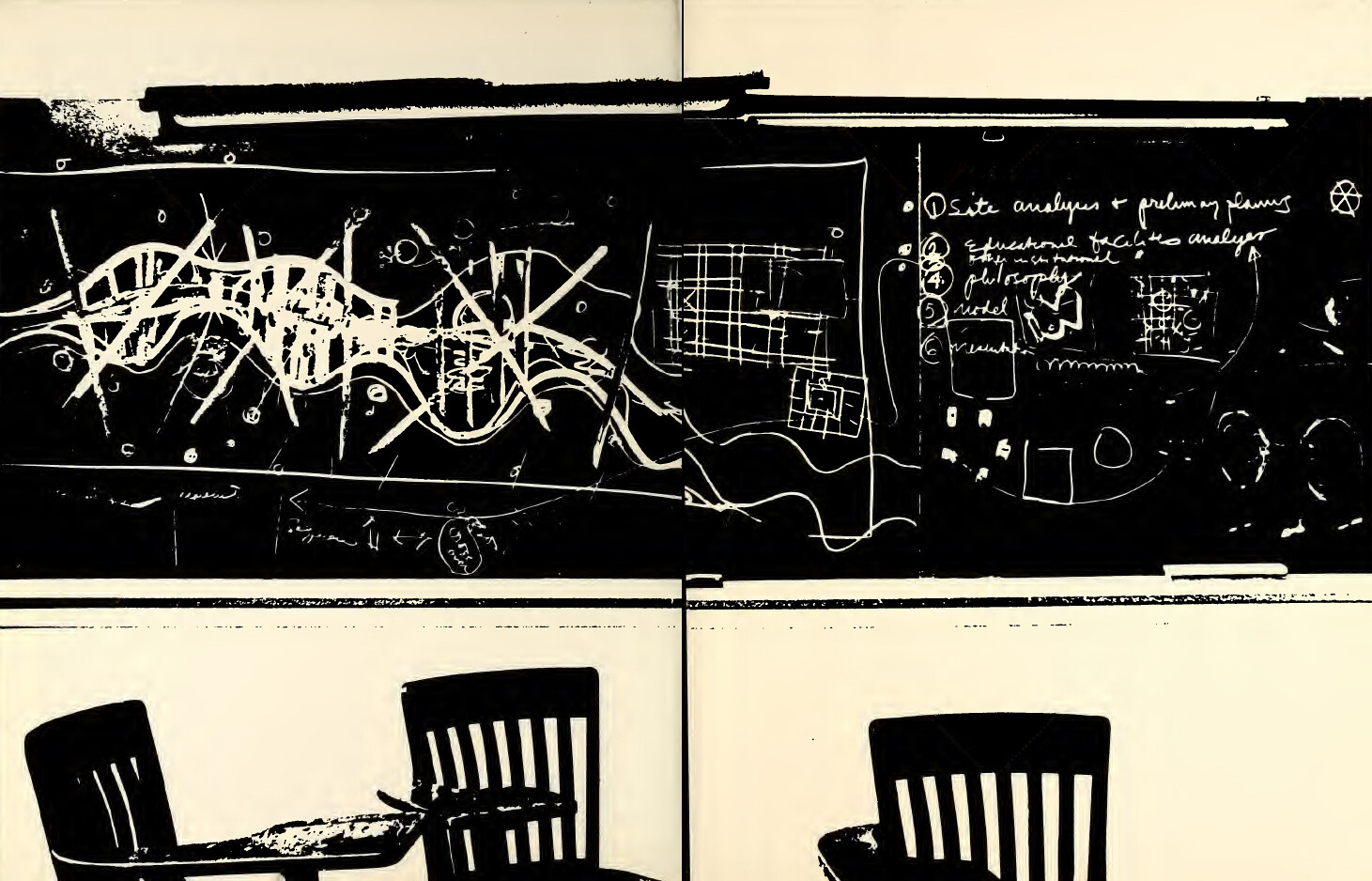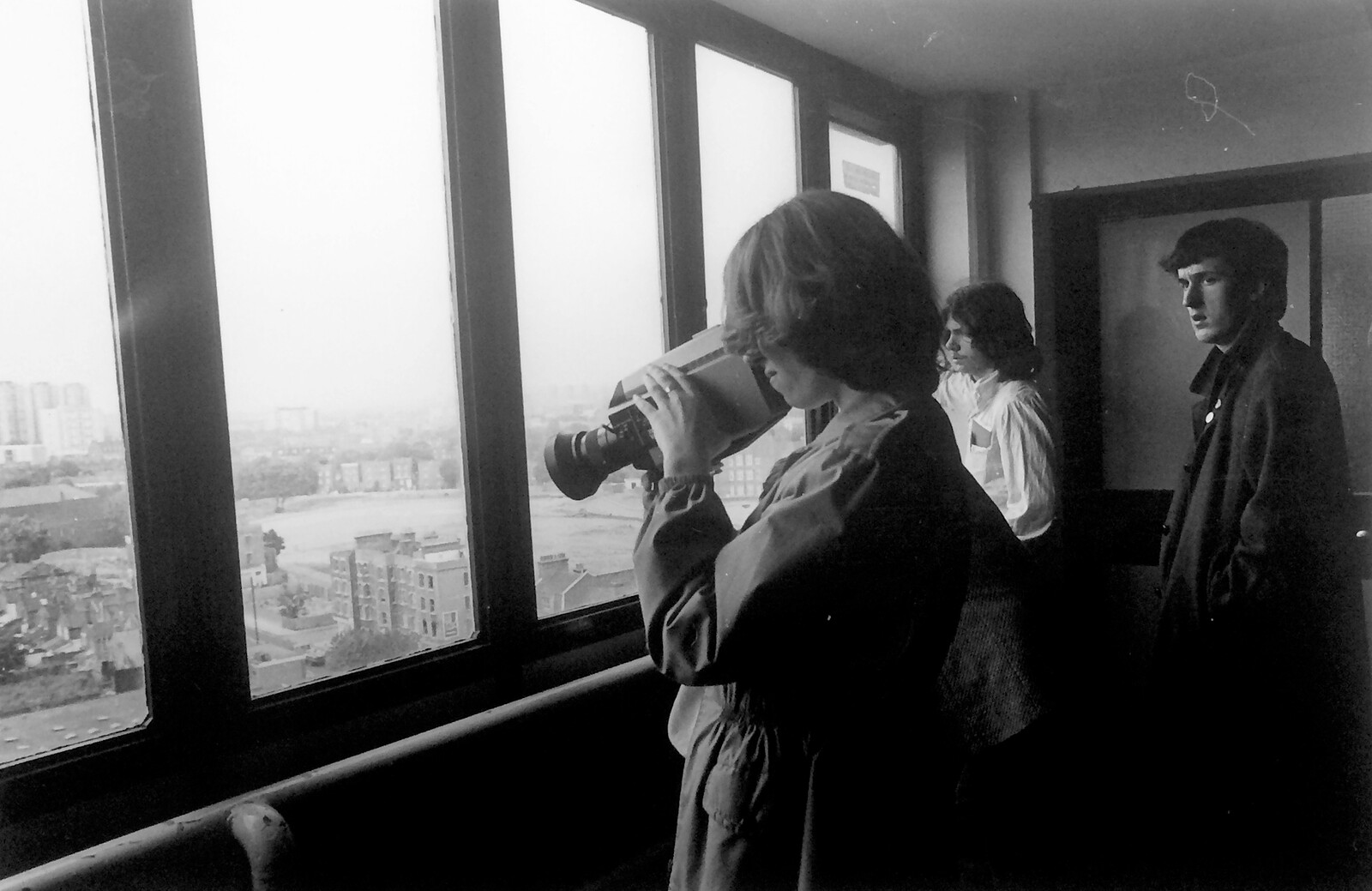Architectures of Education is a collaboration between Nottingham Contemporary, Kingston University, and e-flux Architecture, and a cross-publication with The Contemporary Journal. Drawing on a three-day public program at Nottingham Contemporary on November 7–9, 2019, the series features contributions by Ramon Amaro, Aoife Donnelly and Kristin Trommler, Gudskul, Elain Harwood, Tom Holert, Lesley Lokko, Sol Perez-Martinez, Irit Rogoff, Santhosh S., and more.
Learning has long been at the core of philosophical inquiry. The birth of the nation state brought the attention of politicians, scientists, architects, historians, educators, designers, and administrators alike to questions of education. As past centuries have shown, when pedagogical ideals change, so too do their forms. From frontal teaching to rows of tables and chairs, roundtables, open-air schools, and the technology-driven dissolution of the schoolhouse, the architectures of education make ideologies tangible.
Schools are inherently ideological institutions. They are responsible for shaping one’s conception, understanding, and practice of what Louis Althusser called the “social whole.” And like other ideological apparatuses, the classroom, the book, and the school are intermediaries in a chain of social reproduction. Education has always been a factory of subjecthood. As such, it is a lens to reflect on what it is produced by, and speculate about what is produced.
As a subject of critical inquiry, education is anything but straightforward. Primary schools in Victorian England infamously paired rigid disciplinary teaching methods with bare interiors and windows elevated too high for pupils to look out of them. Conversely, with the child-centered turn in education theory that took place at the beginning of the twentieth century, classrooms and learning objects alike came to be designed at smaller scales, with brighter colors and softer materials. And beyond the classroom, playgrounds became spaces of pedagogical experimentation.
At the same time, education is not only constituted by the dimensioning of space, the positioning of bodies, and the design of objects. It is also conditioned by more intangible features, such as programmatic offerings, curriculum structure, course content, disciplinary methods, hierarchical relations, time scheduling, and more. Zooming out further, there is the school’s spatial location, its role within a wider geographic context, and the various policies of access that determine who a school can be for. Pervasive colonialism, patriarchy, traditional family structures, and different social models and systems of belief have long-informed practices of education. The questions of what or whom a school is for should never be taken for granted.
The student body is subjected to varying didactic rhythms that discipline and oscillate between different fields of knowledge and sets of values. The ongoing student uprisings in Hong Kong and across India recall a deep history in which students have fought and ousted authoritarian regimes worldwide. Given the current neoliberal turn in educational policy—from the implementation of student fees to the public disinvestment in primary and secondary education—it is also crucial to consider the educational role of architecture, as well as rehearse new forums for critical thinking and practice.
As much as schools are places for learning, they can also be sites for unlearning. Over the past one hundred years, schooling has been a scene of revolutionary struggle, with novel architectural forms and pedagogical techniques being invested with the hope of better, or at least different futures. And when this hope has encountered the limits of the institution, it has spilled over its walls and into the streets, in search of more suitable spaces for the learning to be done. With the proliferation of new learning models, platforms, and technologies, both the classroom and the student of tomorrow may look nothing like they do today.
Architectures of Education is a collaboration between Nottingham Contemporary, Kingston University, and e-flux Architecture, and a cross-publication with The Contemporary Journal.
